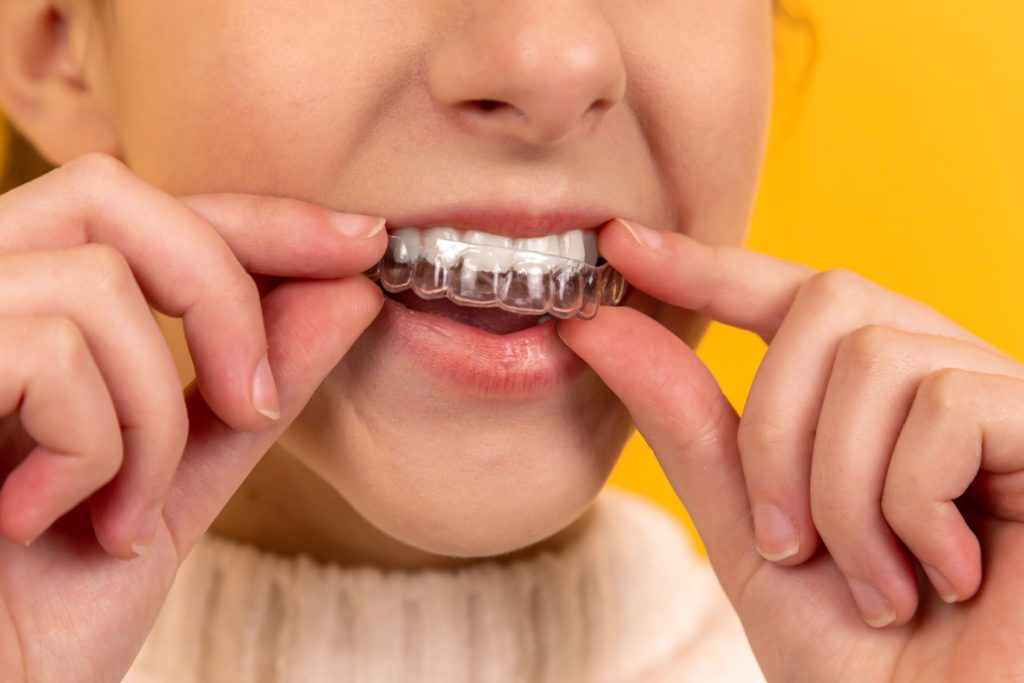To understand the strengths and weaknesses of aligners at home compared to those provided at dental clinics, a brief intro as to what clear aligners are and how they work is needed.
Clear or invisible aligners are an orthodontic tool. They straighten your teeth over time and are based on the same principles of traditional braces but in a more dynamic way. Although you may not appreciate it through your everyday timescale, your teeth are constantly moving, and, by consistently applying pressure in a given direction, your teeth will eventually move.
Braces achieve this by maintaining tension in an archwire that is transmitted through the brackets on each tooth; each bracket adheres to the front of a tooth’s surface. They have been used in dentistry for much longer than aligners and are effective in a wide range of complicated cases. However, there are some disadvantages such as their appearance as well as having to be fitted and regularly adjusted by a dentist, making them unsuitable for use at home or out of the clinic. This is not true with aligners.
In-clinic aligning

The first providers of Invisalign Leicester aligners, who still hold the title for the country’s premier clinic aligner manufacturer, started in the late 90s. They never ceased to innovate on the initial product; now, most of their aligners are fitted after an intraoral scanner sends 3D models of the patient’s teeth to their dedicated service, where the aligners are designed using computer simulations before being produced by 3D printers and sent back to the clinic. They have always advertised repeatable results and expect their dentists to only provide the aligners to patients for whom it would be appropriate. At a dental surgery, the patient relies on their dentist to guide them towards treatments that would be effective and suitable for them; this measures and ranks these partner dental surgeries on their overall success rates rather than some arbitrary sales target.
At-home orthodontics
At-home orthodontics is relatively new and there is a large number of providers jostling in the marketplace. As many operate over the internet often with their own dedicated apps for screening meetings and receiving photos, there is an inevitable distance between them and their patients. Mixed with a crowded online marketing environment, there has been a habit for them to over-promise and potentially push people towards using aligners, not out of medical need or to achieve an aesthetic goal but out of the desire to make a sale.
There is also an inherent issue with providing aligners at home; dental moulding kits have to be sent out with DIY instructional pamphlets. You take your own dental mould and send the finished mould back as the foundation for the aligners. This creates obvious problems since aligners fabricated from a poorly taken mould will be significantly less effective than those taken professionally.
If you absolutely must use an at-home aligner provider (perhaps you live in an extremely remote area), many dental teams would suggest that you beware of the situation and proceed with caution.

